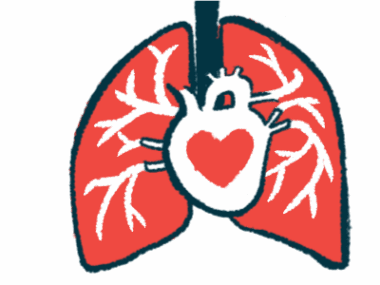Variegate porphyria can cause unusual mental health symptoms
Report details case of woman, 43, who developed acute psychosis
Written by |

The case of a 43-year-old woman with variegate porphyria (VP) who developed acute psychosis despite no prior psychiatric history highlights a less common manifestation of this rare metabolic disorder, according to a new report from clinicians in Europe.
While VP usually causes skin sensitivity, abdominal pain, and high blood pressure, it can also lead to serious psychiatric symptoms like psychosis. As such, the researchers here noted, this case underscores the need for doctors to consider VP when patients show unexplained mental health issues along with other physical signs of the disease.
“Given the clinical heterogeneity across different forms of porphyria, an interdisciplinary treatment approach is essential, and management in specialized centers is strongly recommended,” the team wrote.
Their report, titled “Acute psychosis in variegate porphyria: a case report,” was published in the journal Neuropsychiatrie.
Woman had no history of mental illness
A type of acute porphyria, VP is typically caused by a mutation in one copy of the PPOX gene, which provides instructions for making an enzyme involved in the production of heme. Heme is a molecule that helps red blood cells in the body carry oxygen.
When this enzyme is deficient or not functional, the heme production pathway breaks down, causing toxic porphyrin precursors such as aminolevulinic acid (ALA) and porphobilinogen (PBG) to build up in the body. This can lead to a range of symptoms, from abdominal pain and high blood pressure to mental health problems.
Here, researchers in Austria described the case of a woman who was admitted to the psychiatric department of a hospital with acute psychosis. She had no history of mental illness aside from a brief suicidal crisis in adolescence, and no history of drug use or current medications.
Before her psychiatric admission, the woman had been hospitalized in the intensive care unit (ICU) after experiencing severe abdominal pain, vomiting, headaches, and a sudden spike in blood pressure. She also reported missing her menstrual periods for several months.
Lab tests revealed severe hyponatremia, or critically low sodium levels in the blood, along with elevated levels of certain liver enzymes and signs of syndrome of inappropriate antidiuresis, known as SIAD. With this condition, the body retains excess water, leading to a dilution of sodium in the bloodstream.
Imaging scans were normal, but the clinical picture raised suspicion of porphyria, according to the researchers. Urine testing confirmed elevated levels of PBG, and subsequent genetic analysis identified VP.
Treatment was started with hemearginate — a therapy that provides the body with heme to suppress the accumulation of toxic precursors — along with intravenous, or into-the-vein, glucose to reduce further heme production. Pain was managed with buprenorphine, ropivacaine, and ibuprofen, while midazolam was given for anxiety. Zolpidem also was given to help with sleep.
Despite showing signs of disorientation and mild cognitive issues, initially attributed to low sodium levels, the woman’s condition gradually improved over the course of 35 days.
Symptoms resolved completely after treatment of variegate porphyria
The patient, however, then discharged herself against medical advice. She subsequently was found disoriented in the street, and referred to psychiatric care.
On admission, she reported vivid visual hallucinations, and repeatedly misidentified staff members. The woman was visibly agitated, with restless movements and fast, disorganized speech.
To manage the acute episode, she was treated with low oral doses of lorazepam, an antianxiety medication, and haloperidol, an antipsychotic used to control hallucinations and agitation. Her psychotic symptoms resolved by the following day.
Follow-up lab tests showed normal kidney and liver function, and no electrolyte imbalance. Although some concentration issues persisted, these gradually improved, and the patient returned to her usual level of cognitive functioning within a month.
Looking back, doctors recognized that early signs of psychosis may have already been present during her first hospital stay but were mistakenly attributed to hyponatremia.
The woman later recalled feeling intense anxiety, mistrusting the hospital staff and experiencing strong persecutory delusions while in the ICU. These factors likely influenced her decision to leave the hospital against medical advice, according to the researchers.
Known inducers of [liver] enzymes, which consecutively are also potential triggers for porphyria episodes, include nicotine, alcohol, estrogens, stress, fasting, infections, and a variety of medications. … Preventing disease flares requires comprehensive patient education on the strict avoidance of known triggers.
Because her symptoms resolved completely after VP treatment and no neurological damage was found, doctors concluded that her psychosis was caused by variegate porphyria, rather than a primary psychiatric or neurological disorder.
The researchers suggested that activation of liver enzymes, such as CYP-450, can increase the body’s demand for heme. In people with VP, this leads to a buildup of toxic precursors like ALA, which can disrupt brain chemistry by lowering levels of calming neurotransmitters, while boosting stimulating ones. This imbalance may overstimulate brain regions involved in perception and emotion, contributing to symptoms such as anxiety, hallucinations, and psychosis, the team noted.
“Known inducers of CYP-450 enzymes, which consecutively are also potential triggers for porphyria episodes, include nicotine, alcohol, estrogens, stress, fasting, infections, and a variety of medications,” the researchers wrote. “Preventing disease flares requires comprehensive patient education on the strict avoidance of known triggers.”
The team also emphasized the importance of careful prescribing, as some common medications used in psychiatric care may be unsafe for people with VP.







